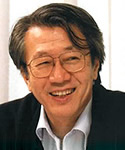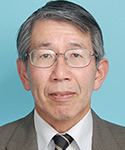Utilizing Wind and Hydraulic Power Using Wind-Lens Technology
— Offshore Floating Energy Farm —

Yuji Ohya
Director, Professor, Section of Wind Engineering, Research Institute for Applied Mechanics, Kyushu University: Japan
To promote efficient use of wind power energy (broadly known as fluid energy), we devised a high-efficiency lens windmill and lens waterwheel. This is a unique combined windmill/watermill structure capable of generating two to three times more electricity simply by placing a simple ring-shaped brimmed diffuser (called a "wind lens") over a revolving rotor. It is a very quiet watermill and can withstand problems such as bird strikes and lightening hazards.
Aesthetically pleasant to look at, the beauty of this structure is that it blends well into the surrounding scenery. As a means of increasing the efficiency of sustainable energy, conditions in Japan are suitable for installing wind power equipment and solar panels on large offshore floating devices that can be flexibly moved and anchored. The future plan is to develop a high-density, complex offshore floating energy farm that will be able to harness energy from multiple sources such as the natural energy of wind power and solar energy above the floating device, and current and wave power beneath the floating device. We have taken the first step in the development of this floating complex energy farm by launching a floating device with a diameter of about 18 meters in Hakata Bay.



